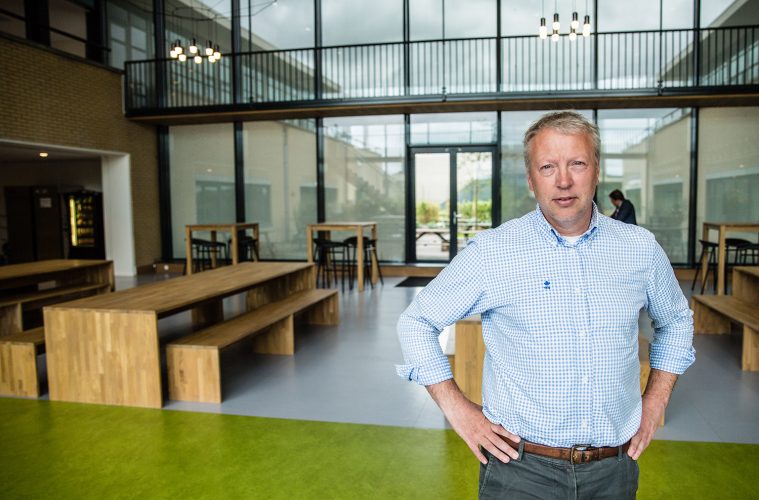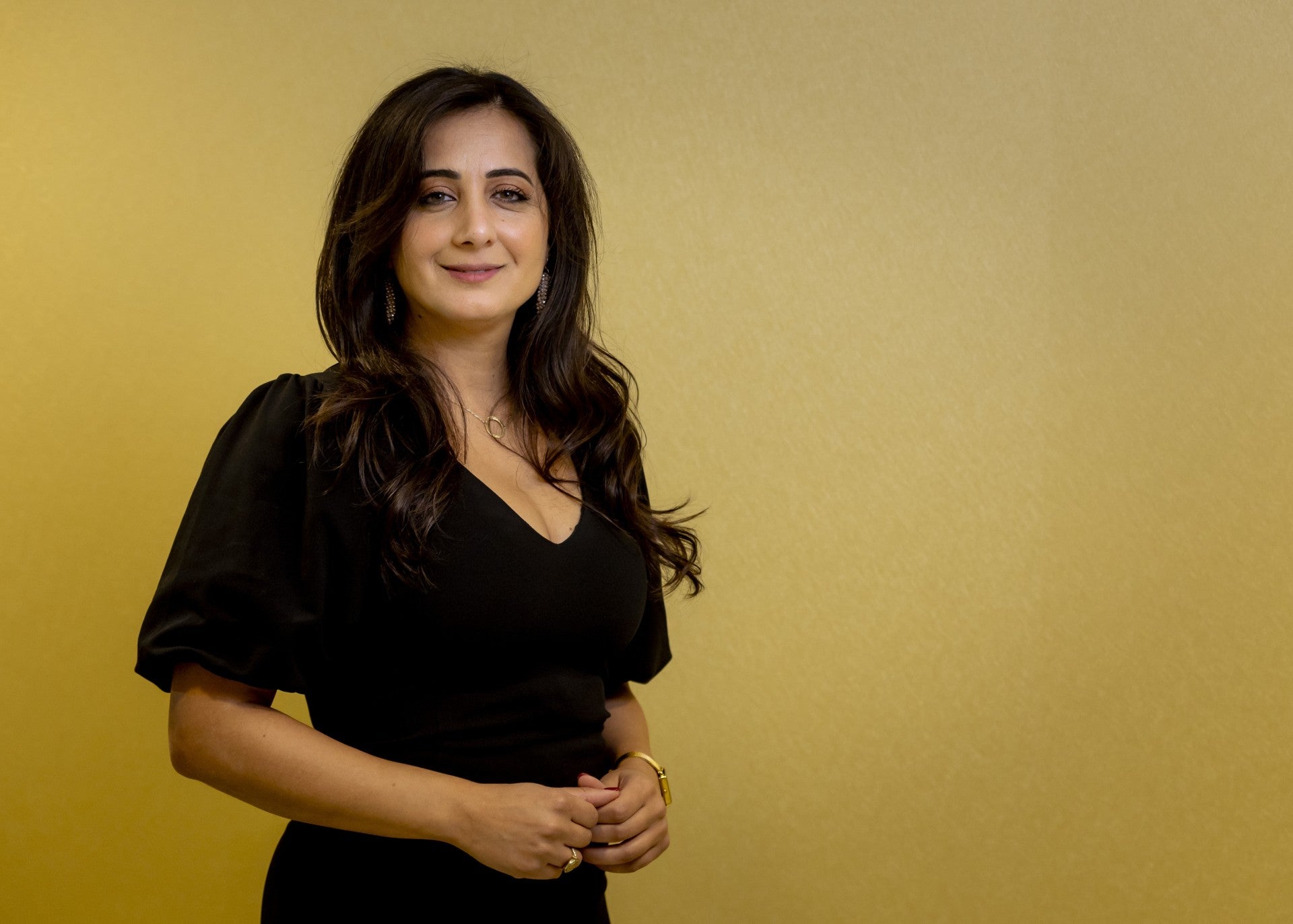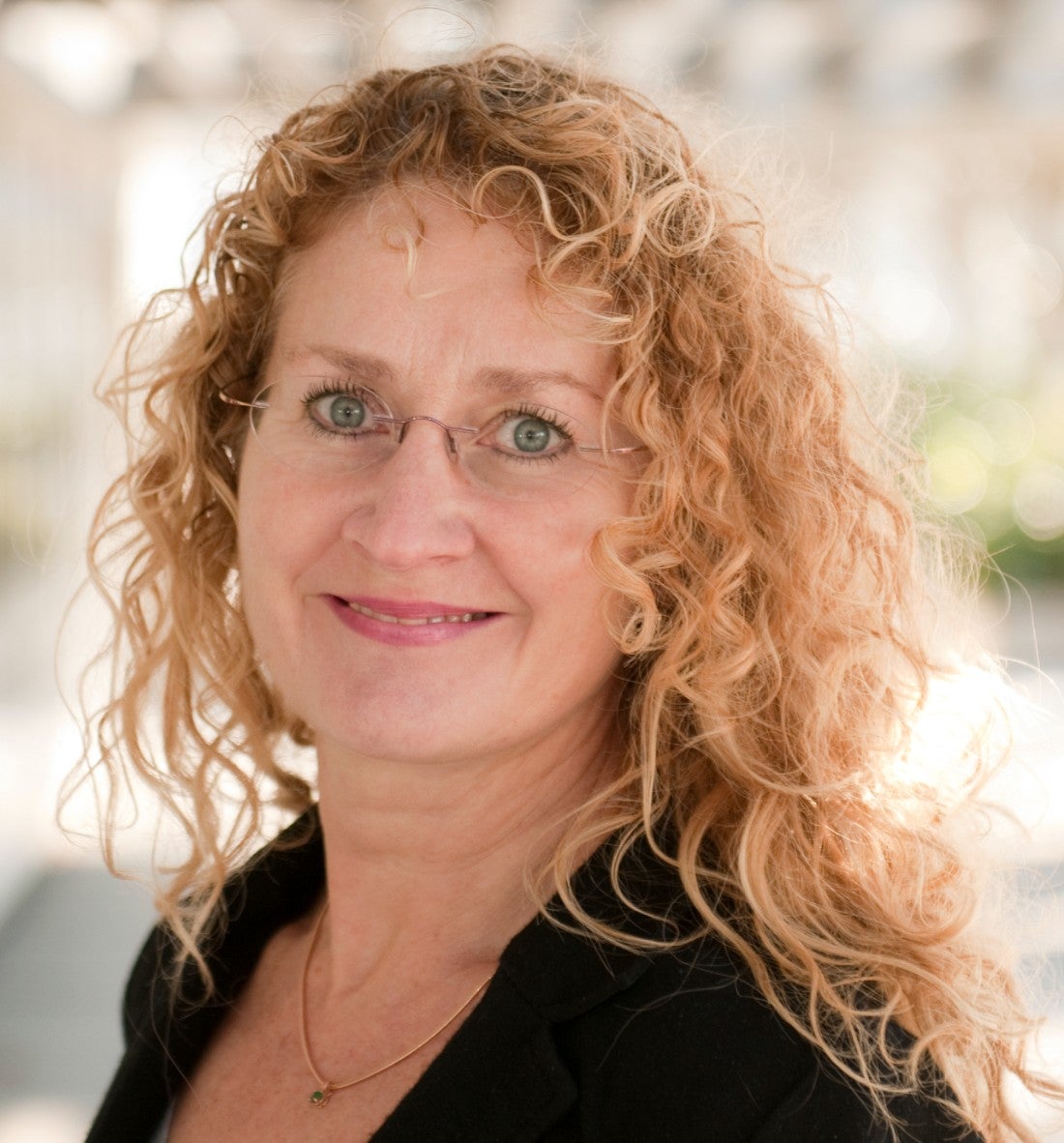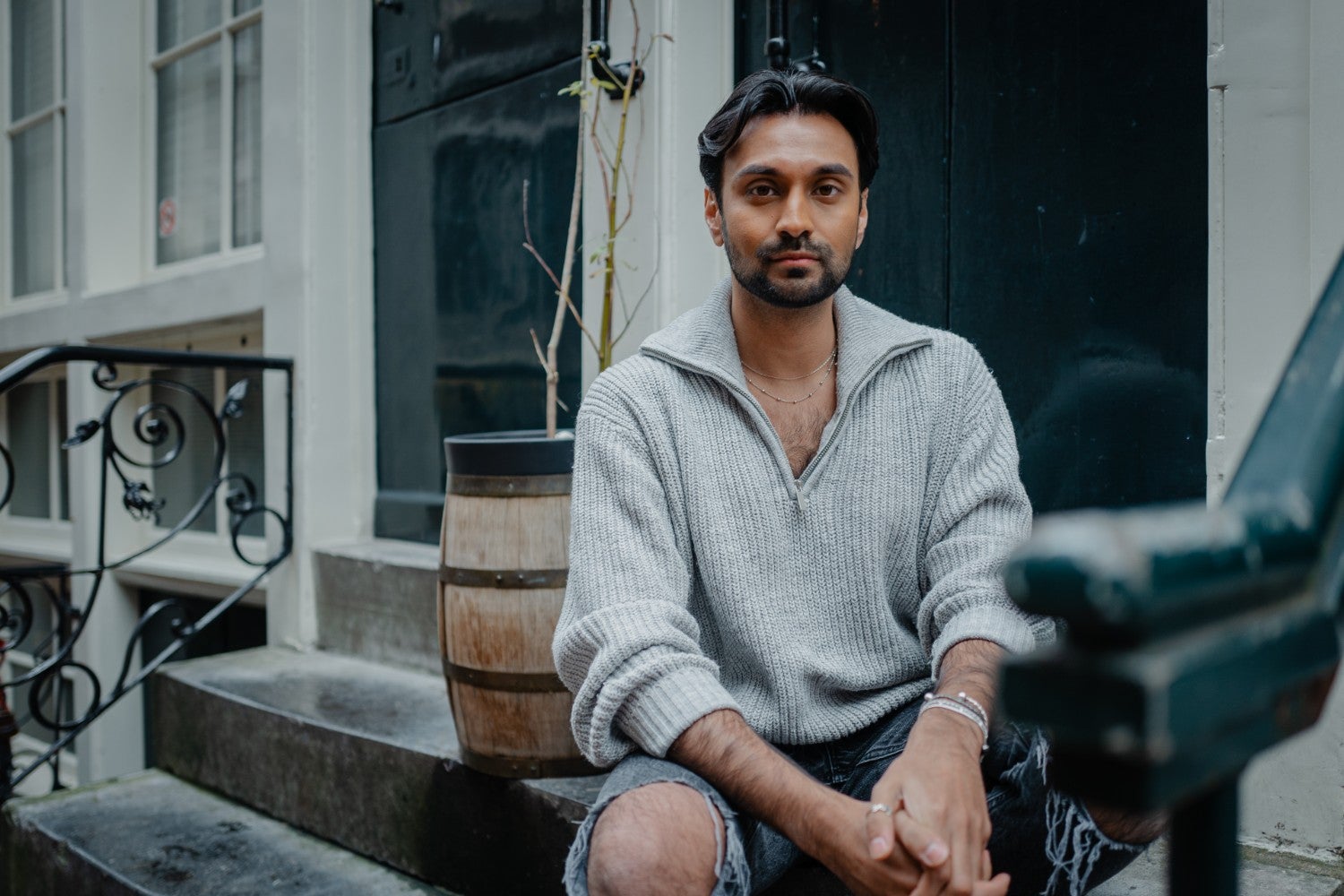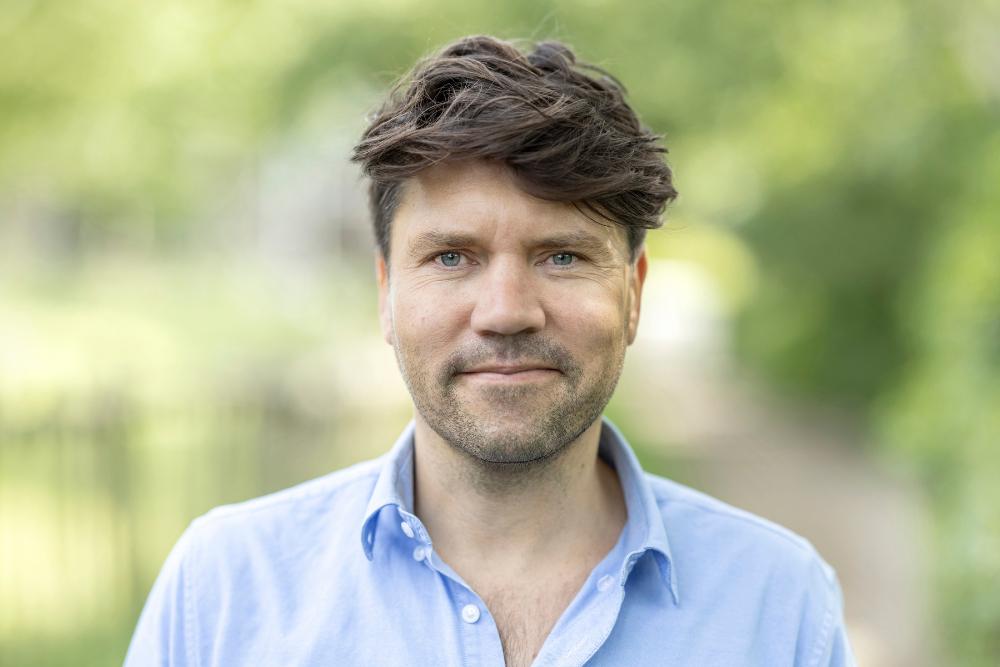He has 200 patents to his name, but one of the Netherlands’ most innovative chemists really just wanted to study medicine. VU alumnus Gert-Jan Gruter makes it possible to produce plastic bottles from plants – bottles that are even better at holding in carbon dioxide and holding out oxygen. His new bioplastic has earned him a nomination for the European Inventors Award 2017.
Sturdy plastic made from plants may not seem like an obvious solution. At the moment, the PET bottles sold in the supermarket are made from petroleum. Gert-Jan Gruter graduated in 1990 and earned his PhD in Organic Chemistry at the VU in 1994. As Technical Director of Avantium, he has developed a sustainable alternative: PEF. This makes it possible to produce plastic from materials such as starch from maize or grain. The technology has been transferred to a joint venture with the chemical firm BASF. The first PEF bottles will probably be in stores in 2021.
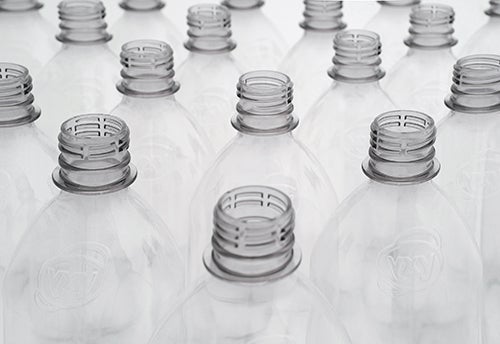
What does PEF mean for the world? “Each year, we use 325 million tonnes of plastic, of which more than 20 million tonnes is used for plastic bottles alone. Due to the population growth and increasing prosperity, the amount of plastic is expected to triple over the next few decades. In Paris, the world’s governments agreed to significantly reduce CO2 emissions from oil, gas and coal. This can be done by generating energy from solar and wind power, but using biomass instead of oil to make plastics would also save a lot of CO2 emissions. Until now, it has not been possible to produce it at a large scale, or it was not suitable for bottles. But PEF makes it possible. Moreover, PEF decomposes much faster than PET. We won’t eliminate the ‘plastic soup’ in the oceans, but the waste won’t stay present in nature anywhere near as long.”
How did you manage to invent PEF? “When I became Technical Director at Avantium in 2004, I was asked to initiate our own research into products and chemical processes in addition to our research for other firms. I believed that with our in-house knowledge, we could make great strides in making biomass suitable for use as a raw material. And I was right: we were the first researchers to successfully produce kilogrammes of PEF. We were also the first ones to make bottles out of it.”
‘PEF is also stronger than PET, and you can pasteurise its contents. Those were two pleasant surprises’
Why is the focus on bottles? “Companies only switch to using a more sustainable material if they see an economic benefit or if the product’s performance is unprecedented. We discovered that PEF is not only more sustainable than PET, but also capable of higher performance. It keeps oxygen out and carbon dioxide in more sufficiently. Beer and juice companies have sought a material like that for years, because it keeps their products fresh longer. That’s why we focused on applying it to bottles. Later on we discovered that PEF is also stronger than PET, and that it has thermal benefits as well: you can pour fluids up to 80 degrees Celsius into the bottle and pasteurise fluids right in the bottle. Those were two pleasant surprises.”
Aside from PEF, you have more than 200 other patents to your name. Do you have a talent for invention? “I’ve always been closely involved in new research, so patents mounted up quickly. As a Director, I also like to contribute something substantive to my research groups, and I always have ideas, so I’m often directly involved in inventions. I’ve also worked part-time as a Professor at the TU Eindhoven, where I supervised PhD researchers. Today, I have another part-time position at the UvA, where I do the same. I think that due to my work experience I’ve become good at recognising which experiments have potential. That’s why my current position as Technical Director suits me well. When a researcher comes to me with an idea, I quickly see what is worth developing further, and for which applications the idea is most suitable.”
‘I’ve learned to recognise which experiments have potential’
What is a typical work day at Avantium like? “I supervise six research groups in the field of renewable chemistries. Together with the groups I always discuss the results and the next steps. We also work closely together with partners, such as Coca Cola or Danone. In practice, I spend more than 3/4 of my time in meetings, and the other quarter on literature research and conferences. I almost never get to the lab anymore, and I do miss that sometimes. But in the end, the important thing is that our innovations are applied. That’s the greatest achievement as a chemist.”
You originally wanted to study medicine. How did you end up in chemistry? “After I was eliminated by lottery for medicine for the third time, I thought: I’ll just start by taking some chemistry courses first. On my fourth attempt, I had drawn a place, but by then I was already sold on chemistry. I was especially interested in organic chemistry: creating molecules that hadn’t been created before. That was probably due to the lecturers and the research assistants. Professor Fritz Bickelhaupt, who taught organic chemistry, had an especially big influence on me. He was also my PhD supervisor. He has unfortunately passed away, but his son still teaches at the VU as a Professor of Theoretical Chemistry.”
‘The invention itself was useless, but I learned to face challenges’
What made this professor so unique? “He was just an excellent chemist. If you had produced an unexplainable product, he could derive exactly which reactions must have taken place. He also had a fascination for beautiful molecules. One time he and I tried to make a product from two ring-shaped, interlocked molecules. The likelihood that one ring would close at the exact moment that the other was in the right position was extremely small, around 0.1%. Bickelhaupt motivated us to increase the chances, and eventually we did it. The invention itself was useless, because we couldn’t use it to make anything, but I learned to face challenges. PEF is a good example of that. The most important building block of PEF, FDCA, was discovered more than 150 years ago, but no one succeeded in producing it at an industrial scale. We therefore dared to put together a puzzle that chemists had been struggling with for more than a century and a half.”
What other puzzles would you like to solve? “A large proportion of the plastics that will be produced in the future will have to be bio-based, or else we will never realise the Paris agreements. As a chemist, I feel responsible for making that possible, especially now that I have the knowledge and resources needed. But I also have ambitions outside of the field of chemistry. Next year, I want to work with philosopher and Professor Bas Haring (University of Leiden) to study how you can convince consumers – and through them, the industry – to place a higher priority on the climate.
‘We also want to try to produce building blocks for plastics from CO2‘
“At Avantium, I aim to look for other new sustainable materials in addition to PEF, and I will try to make PEF even more sustainable. At the moment, we use starch, but that could compete with food production, so in the future we hope to be able to use waste products. We are about to set up a pilot project in which we will convert wood chips from the National Forest Service into glucose, the precursor for FDCA. In another pilot project, we will study whether it is possible to produce the building blocks of plastic from CO2. That means converting one of the biggest environmental problems into a raw material for industry. That would be the ideal circular economy.”
Interesting for VU alumni Last year, Avantium opened a new lab at the Science Park in Amsterdam. There are still eight openings for the research team. There are also several job openings for PhD students.
HIER MOET NOG EEN CONTENTBLOK MET CV KOMEN!!

